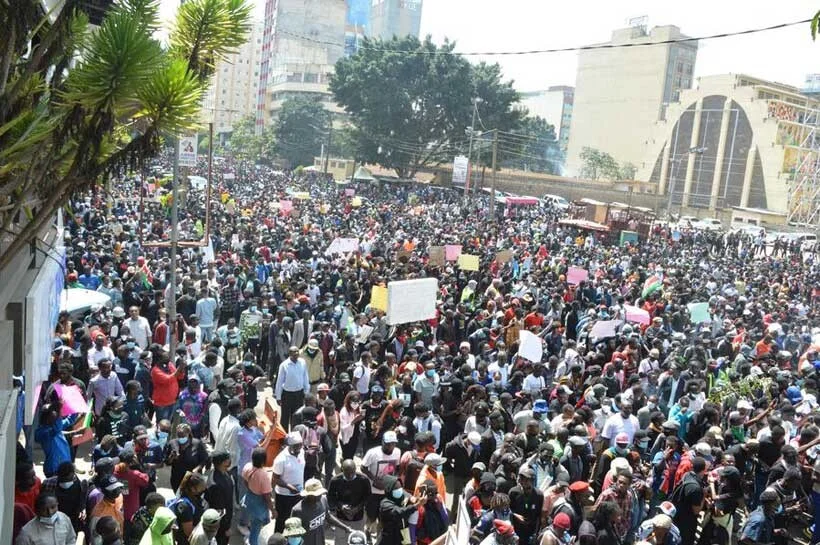
People participate in anti-tax demonstrations in Nairobi, capital of Kenya, June 25, 2024.
In the digital age, mass protests across the globe have been significantly influenced by two powerful forces: Artificial Intelligence (AI) and social media.
The Case of Pakistan: AI-Generated Misinformation in Protests
- The recent [2024] protests in Pakistan, triggered by the arrest of former Prime Minister Imran Khan, offer a stark example of how AI and social media can exacerbate violence. Khan's Pakistan Tehreek-e-Insaf (PTI) party organised large demonstrations, demanding his release.
- However, the protests quickly spiralled into violence, with protesters clashing with police and military forces in the capital, Islamabad. During the chaos, a range of AI-generated images were circulated online, purporting to show the horrific aftermaths of the protests, including streets allegedly covered in blood.
- One of the most widely shared AI-generated images depicted Jinnah Avenue in Islamabad, supposedly showing bloodstains covering the road after violent clashes. However, fact-checkers quickly debunked the image, revealing that it was not only inaccurate but also generated by AI.
- Details such as the abnormal positioning of shadows, misplaced buildings, and artificial lighting indicated the image was computer-generated. Similar AI-manipulated images appeared across various platforms, with claims that up to 300 people had been killed during the protests, though official reports indicated much lower figures.
These AI images, presented without context or verification, fueled the spread of disinformation, inciting further violence and inflaming tensions between the protesters and the government.
- AI-generated visuals, often shared rapidly via platforms like X (formerly Twitter), Instagram, and Facebook, have the potential to create a distorted sense of reality. In this case, they contributed to a narrative of widespread carnage and governmental oppression that was not entirely grounded in truth.
- This manipulation of visual media has become a key tool in modern protest movements, where the digital landscape is as crucial as the physical one in shaping public perception.
Source: Modern Diplomacy
Key Implications
- AI-generated content can rapidly spread misinformation during volatile situations
- Visual media manipulation distorts reality and inflames tensions
- Social media platforms amplify both authentic and fabricated content
- Fact-checking struggles to keep pace with AI-generated disinformation
- Digital manipulation becomes as impactful as physical events in shaping narratives
